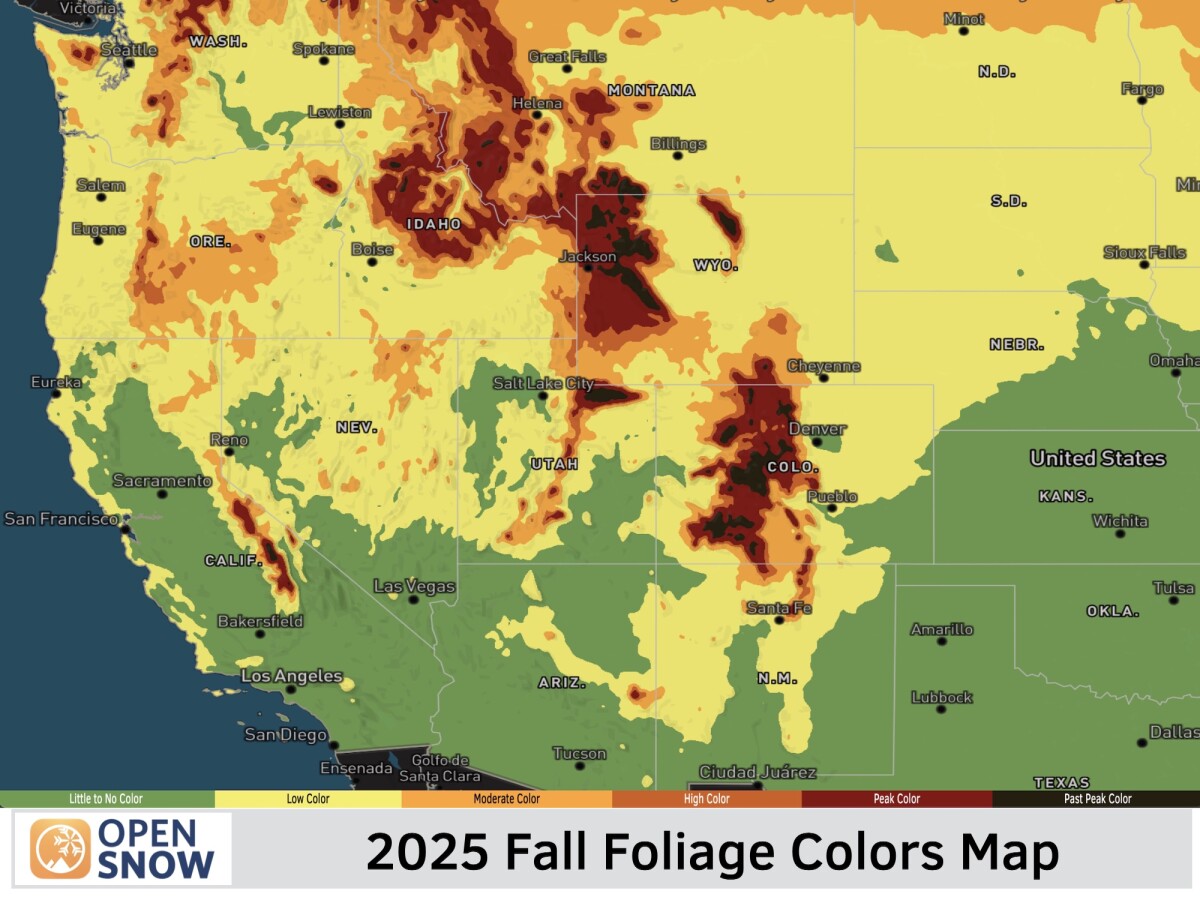News

By Alan Smith, Meteorologist Posted 1 year ago September 15, 2023
Snow Levels, Explained

Snow levels are an important consideration when it comes to outdoor activities in the mountains, whether you are skiing in the winter, driving over a mountain pass, or planning a hike during the shoulder seasons.
According to the U.S. National Weather Service definition, the term snow level refers to the elevation above which snow will fall, and below which rain will fall. A mix of snow and rain may occur within a few hundred feet of the snow level (both above and below).
The term snow level is often used interchangeably with the rain/snow line.
Snow Levels vs. Freezing Levels
The freezing level refers to the free-air elevation above which the air temperature is less than 0ºC (32ºF), and below which the air temperature is greater than 0ºC (32ºF).
It might be easy to assume that the snow level is the same thing as the freezing level, but this is not the case.
According to research conducted by National Weather Service scientists, the snow level, on average, is about 700 feet lower than the freezing level, with a typical range of anywhere from 500 to 1,500 feet below the freezing level. In other words, snow can fall even if the air temperature is above freezing.
Once a falling snowflake reaches the freezing level, there is a lag time as it falls before the snowflake melts into a raindrop. Several atmospheric processes influence how far snowflakes can fall below the freezing level before melting into rain (if at all).
Reasons for the Differences Between the Freezing Level and the Snow Level
There are three key processes that cause snow to fall below the freezing level: 1) evaporative cooling, 2) melting, and 3) orographic influences. The extent of each process also affects just how low the snow level can fall below the freezing level.
1) Evaporative Cooling
When precipitation begins to fall, it's common for the air near the surface, or in the lower elevation valleys between mountains, to be drier compared to the saturated air aloft.
When falling precipitation reaches the drier air in the lower levels, evaporation occurs which has a localized cooling effect on the surrounding air. This process known as evaporative cooling can bring the snow level down to lower elevations.
2) Melting
As falling snow reaches the freezing level, it will begin to melt below the freezing level, eventually turning to rain. If the rate of precipitation is light but the lower levels of the atmosphere are saturated, then snow may turn to rain only 500 feet (or less) below the freezing line.
However, heavy precipitation rates can have the opposite effect. Heavy snowfall reaching above-freezing air (below the freezing level) means that there is a substantial amount of falling snow that will begin to melt.
The process of melting (the change in state from a solid to a liquid) requires substantial energy. Energy is a source of heat, so the loss of energy through melting results in a loss of heat, and this has a net cooling effect in the surrounding air.
As a result, heavy precipitation rates can drag the snow level down by as much as 1,500 feet (if not more) below the freezing level, which can result in an area seeing a quick transition from rain to heavy, wet snow.
This is common during heavy precipitation events in the Sierra Nevada, Cascade, and Coastal Ranges and is challenging to forecast, as there is often a sharp cutoff between an area receiving rain vs. heavy snow.
3) Orographic Influences
Research conducted in the Sierra Nevada Range has found that local orographic factors can also result in snow levels dipping significantly lower than freezing levels at times due to the microscale impacts that terrain can have on temperature, wind, moisture, and melting and evaporative cooling processes.
For example, the rise in terrain associated with a mountain barrier can enhance precipitation rates on the windward side (the side of a range where the wind is blowing from), thus dragging snow levels down.
Due to orographic influences, snow levels can be much lower on one side of a mountain range than the other at a given time, depending on the specifics of a particular storm.
Snow Level Changes During Storm Cycles
The snow level often will trend upward or downward (or sometimes both) during a storm cycle, with hour-to-hour fluctuations also possible due to the three factors mentioned above.
Warm fronts or atmospheric rivers can cause snow levels to rise during a storm, with lower elevation areas seeing a transition from heavy snow to rain. On the other hand, snow levels typically fall behind the passage of cold fronts with some areas seeing a change from rain back to snow.
What About Sleet and Freezing Rain?
Snow levels are not a useful metric once sleet or freezing rain enters the equation. This is because a layer of above-freezing air aloft with below-freezing air at the surface causes sleet or freezing rain to occur when precipitation is falling.
In other words, above-freezing air overrides below-freezing air, causing precipitation to melt into rain and then re-freeze before or upon reaching the surface.
Snow Levels Forecasts on OpenSnow
We provide daily and hourly snow level forecasts for ski resorts, backcountry areas, and any location in the world with our Forecast Anywhere feature.


For a given location's forecast page, click on the "Snow Summary" tab and then scroll down to view the snow level forecasts.
This is a great tool to use for skiing, especially in maritime climates such as the Sierra and Cascades, and also for hiking and climbing during the shoulder seasons when higher elevation areas could be receiving snow and lower elevation areas rain.
Alan Smith, Meteorologist
About The Author




